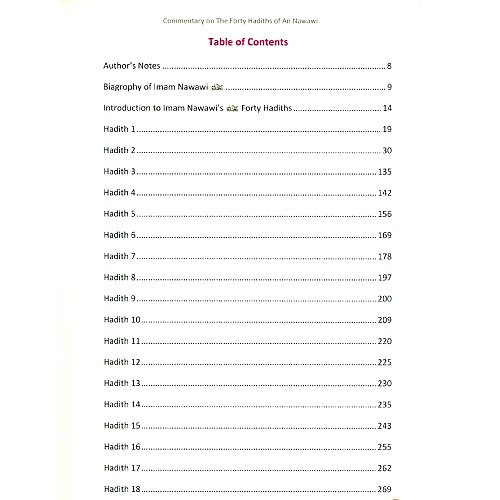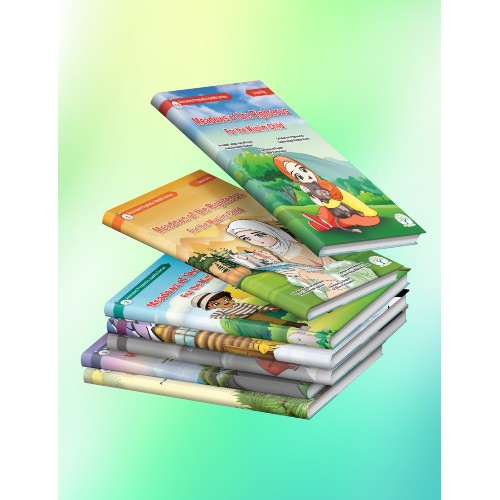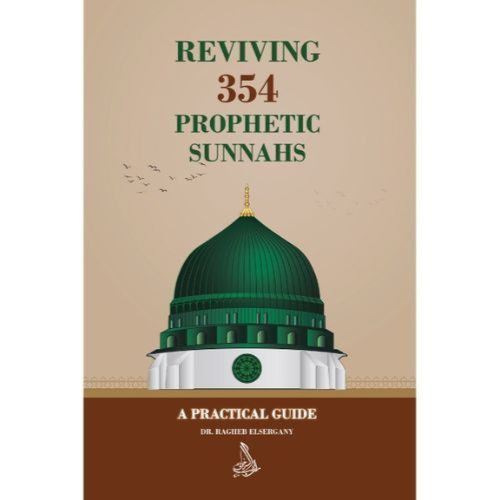View cart “Bulugh Al-Maram (Attainment of the Objective)” has been added to your cart.
A Commentary On Nuzhatun Nazar Fi Tawheedi Nukhbatil Fikr ( 2 Vols)
Highlights:
About Hafiz Ibn Hajar Asqalani Imam Ahmad ibn Ali al-Asqalani (d. 852/1448); famously known as Ibn Hajar after one of his ancestors is arguably the best hadith scholar of the Mamluk period. The Dhahabi of his time and the amir al-muminin of the hadith scholars. Imam Suyuti says that he drank from the well of zamzam and prayed to Allah to give him more knowledge than Shams ad-Din adh-Dhahabi. He is the author of over 300 books some going into lengthy volumes. He died on Friday 28 Dhi al-Hijja 852 hijri and was buried in al-Qarrafa; Cairo; now famously known as the City of the Dead (madinat al-mawta)
RM210.00
A Commentary on The Forty Hadiths of Imam Nawawi
Highlights:
A comprehensive work commenting on Imam Nawawi’s Forty Hadiths
RM132.00
Collection From Riyadus Saliheen (Full Colour)
Highlights:
Collection from Riyadus-Saliheen by Al Imam An-Nawawi This book is an authentic research material in accordance with the Quran and Sunnah,and free from every type of vague conception,weak authority and false. This book is the best presentation of Riyadus-Saliheen ever produced in any language anywhere. Keeping in the view the problems or our times, this book is a concise volume that Sheikh Safiur-Rahman Mubarakpuri has made the selection of Ahadith.
RM120.00
Hadith: Muhammad’s Legacy in the Medieval and Modern World (2nd Edition)
Highlights:
Contrary to popular opinion, the bulk of Islamic law does not come from the Quran but from hadith, first-hand reports of the Prophet Muhammad’s words and deeds, passed from generation to generation. However, with varying accounts often only committed to paper a century after the death of Muhammad, Islamic scholars, past and present, have been faced with complex questions of historical authenticity. In this wide-ranging introduction, Jonathan A. C. Brown explores the collection and criticism of hadith, and the controversy surrounding its role in modern Islam. This edition, revised and updated with additional case studies and attention to the very latest scholarship, also features a new chapter on how hadiths have been used politically, both historically and in the Arab Spring and its aftermath. Informative and accessible, it is perfectly suited to students, scholars and general readers interested in this critical element of Islam.
RM190.00
Meadows of the Righteous For the Muslim Child (7 Books Set)
Highlights:
A fully coloured illustrative educational book for children
- This is a set of 7 books beginning with kindergarten/nursery (KG) level and extending to Year 6
- Each book contains 50 Prophetic hadith, illustrated with fully coloured pictures, which helps the educator to deliver the message adequately to the child.
- Text is in Arabic and English, with a contents page
- Collated and prepared by Dr Ibrahim Abdul Rahman Al-Ani
- Illustrated and Design by Huda Saadelddin Aljebawi
- Translated by Dr Omer El-Hamdoon
- Published by Kingston Oak Tree Institute
RM200.00
Reviving 354 Prophetic Sunnahs: A Practical Guide by Dr. Ragheb Elsergany
Highlights:
Prophet Muhammad (peace be upon him) predicted that a time would come when people would deliberately leave the Sunnah, and rely only on the Noble Quran. Both this authentic hadith and many verses of the Quran make it clear that to do so is delusional and misguided.
RM120.00
Riyad-us-Saliheen (2 volumes)
Highlights:
Noble Hadith and Hadith Sciences
RM150.00
The Best Divisions For Knowledge Of The Regions (P/B)
Highlights:
“Al-Muqaddasi was born in the year 945 of the Common Era (CE), which corresponds to the year 334 of the Islamic calendar (AH), and he died towards the close of the millennium. Defining the area of his study as that where the presence of the religious and political institutions of Islam dominated, he travelled throughout the regions observing, enquiring, researching, corroborating, weighing and sifting evidence, taking notes and writing drafts.
Ahsan al-Taqasim fi Ma’rifat al-Aqalim, The Best Divisions for Knowledge of the Regions, was eventually published in 985CE/375AH, and a revised edition was produced three years later. Al-Muqaddasi attributes his motivation for travelling for twenty years, suffering hardships, and writing about his travels, to divine inspiration: the accomplishment would be pleasing to his Lord, and would give life to his own memory. At the same time( there are suggestion that he journeyed as an agent for the Fatimid regime in Egypt) ed. Whatever the reason for his travels, al-Muqaddasi shows himself to be a hardy, intelligent, versatile, resourceful and well-informed man.
He designed his book to appeal to a variety of interests, and even to entertain. Yet, quite strikingly, his perspective on aspects of the geographical method touches on concerns which have received greater attention only in more recent times. For example, his ranking of settlements according to their functions is quite prescient, his use of maps in accord with modern practice and his excursion into determinism based on toponymy is, to say the least, unusual.
All in all, al-Muqaddasi’s work bespeaks an interested and interesting man, seeing his world through a frame of reference derived from his deeply held Islamic belief, yet he is capable of making his assessments with probity and common sense, striving scrupulously to get at the truth of the matter as a true scientist.
Early in the second half of the nineteenth century the German Orientalist Aloys Sprenger brought to the attention of the West a manuscript of al-Muqaddasi’s work. Sprenger’s enthusiasm over the content of the manuscript was reflected in his judgement that its author was the greatest geographer of all time. The translation by Basil Collins published here is the first rendition into a Western language of al-Muqaddasi’s treatise.
RM125.00



















